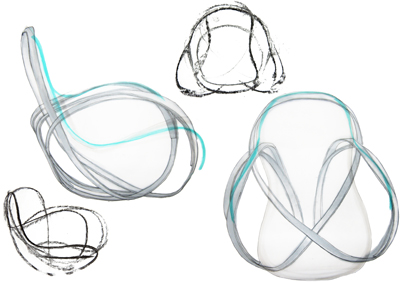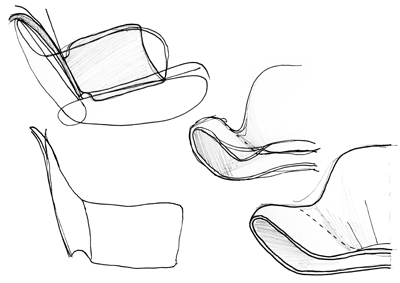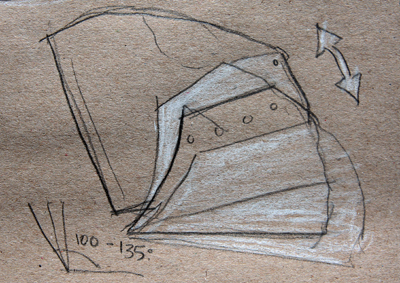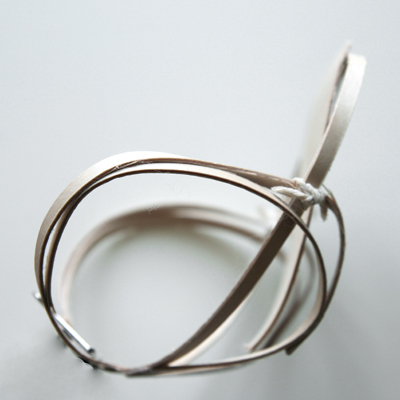
Sep '09 - Dec '11
While everyone I know back in Canada is getting ready for final presentations and exams, we're entering 'mid-term' time here in Copenhagen.
When I first applied at the KA, I was like 'yeah! longer semesters = more time to do fun school work.' What the crap was I thinking? Longer semesters actually equal dragging projects out for ages and not being able to work for a decent amount of time in the summer.
Ah well. C'est la vie.
Since the user-centred design workshop I mentioned, we've done several more workshops with the goal of helping us get into our chair project. The official title of the project is 'Body and Object' and while there are some brave people who've interpreted that a little more broadly, the majority of us are designing a chair.
For me it's been a real challenge to switch scales from a bridge to a chair. I've always designed spaces or buildings--never furniture or products. I am so familiar with doing site analysis and working within an urban context that it was really tough to figure out what kind of 'research' to do and more importantly, to relate that research to a chair design.
As mentioned previously our target age group is 60+.
When I first started the project, I was really excited by the initial research we had done with the user group. What came out of that was an idea of memory and embodied feelings that people have with furniture.
A lot of the people we talked to mentioned that as they moved into smaller apartments, they had to get rid of a lot of the furniture they had got when they were first married. This was nice, solid, quality furniture that sort of 'grew up' with their family. Unfortunately the furniture was too big and heavy for their smaller dwellings, and they usually had to buy some cheap, light, efficient furniture. They felt that the nature of their environment changed a lot because while the new furniture was practical, it had no personal meaning for them.
While this was all very interesting, it turned out to be a lot harder to turn the idea of 'embodied memory' into a furniture design. Especially since it is hard to define a collective memory for an age group spanning 3 decades.
So, not that this is a scrapped idea or anything, but it's sitting on the back burner right now.
What became interesting for me was the dual ideas of adaptability and adjustability. I started looking at the bodily changes that people undergo when they age, and thought it would be really useful to introduce a chair that would be able to adjust to you as your body changes.
Of course all kinds of adjustable chairs already exist, but most of them are in the office-chair category which has it's own set of needs. I wanted to look at an adjustable chair in a lounge-chair context. So far the market is slim; most people who want a comfortable chair that reclines, swivels, and rocks are confined to overly padded lazy-boy recliners. There's definitely room for aesthetic improvement here.
The other problem with current adjustable chairs (specifically office chairs) is while they have some really useful adjustments, very few people actually use the adjustments to their potential because of the technical aspect. Studies show that in chairs like Herman Miller's Aeron chair, with an enormous spectrum of helpful adjustments, most people only use the height adjustment.
That's what led them to research and design a new chair with only a single height adjustment: it's an intuitive chair called the Setu, and it uses the principle of a kinetic spine that self-adjusts to the user.
I'm taking this idea of a self-adjusting chair into my design, and so far it's keeping me excited. 








Anyways, midterm reviews start tomorrow and Friday, from there it's another 2 months and then I'm off to Iceland!
No Comments
Block this user
Are you sure you want to block this user and hide all related comments throughout the site?
Archinect
This is your first comment on Archinect. Your comment will be visible once approved.